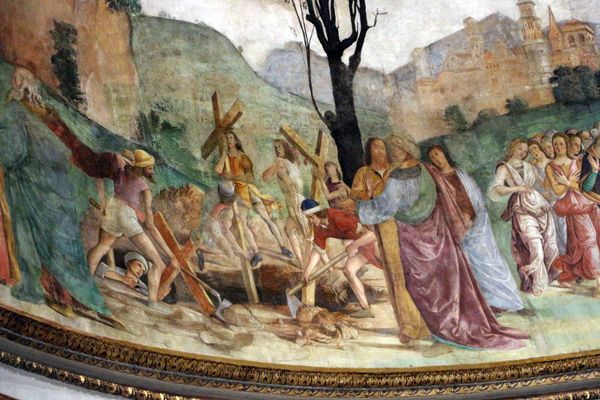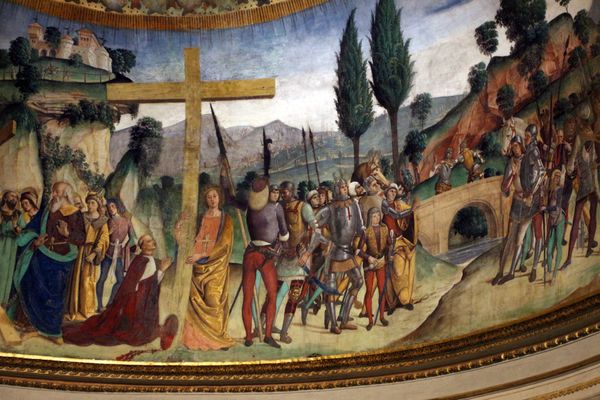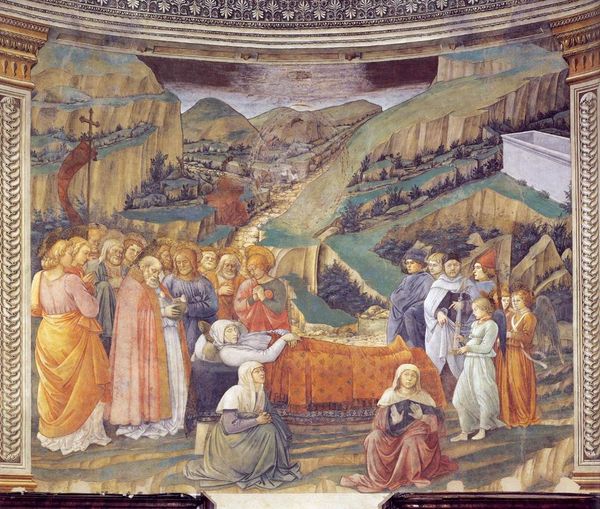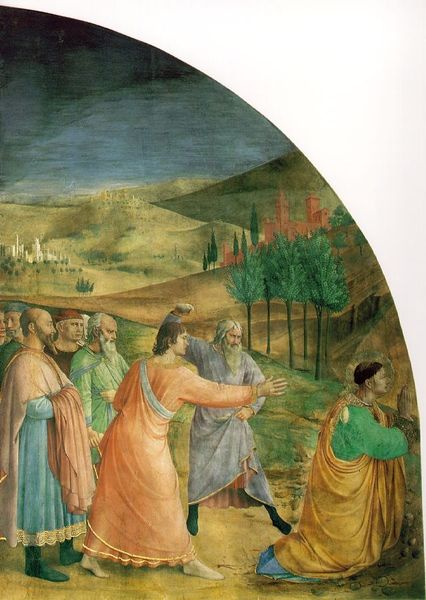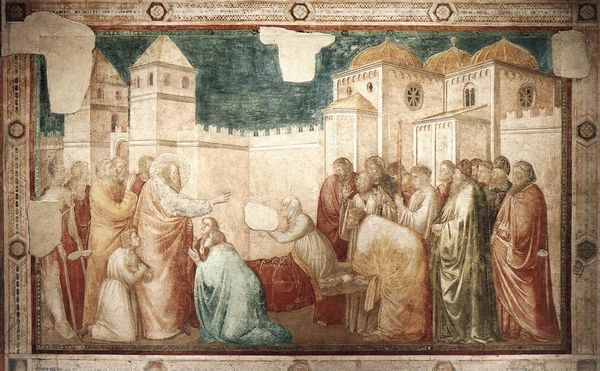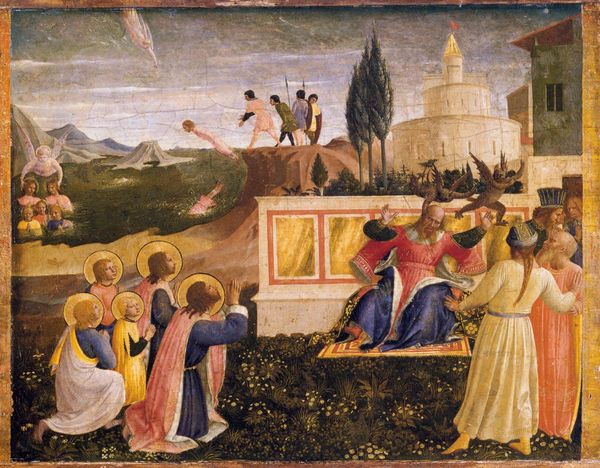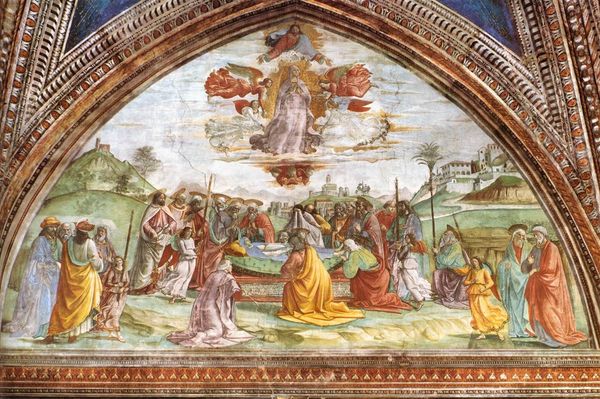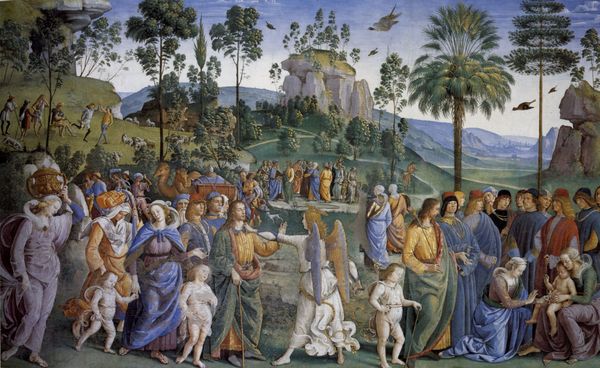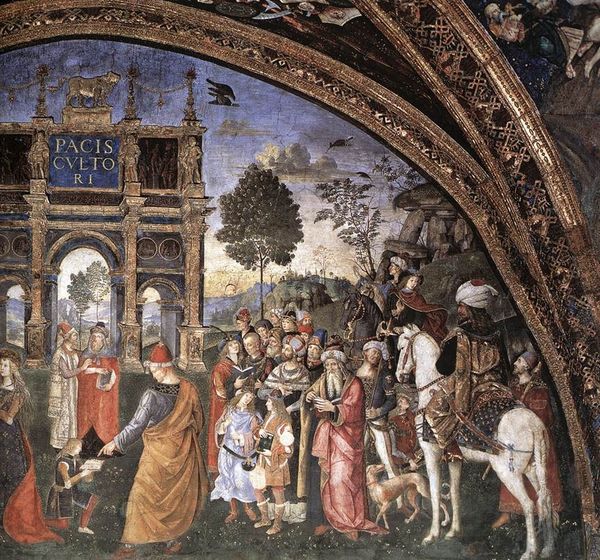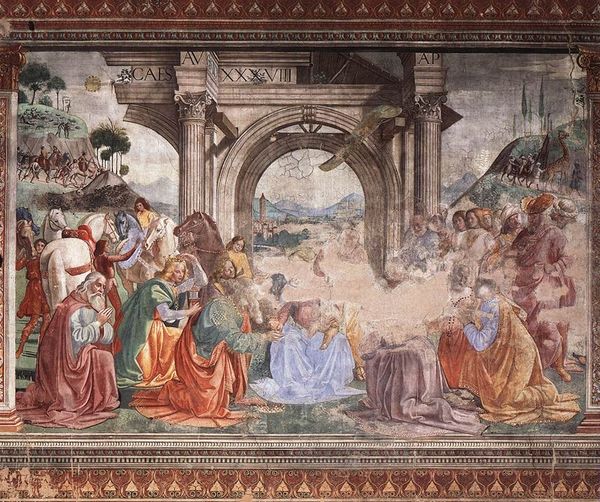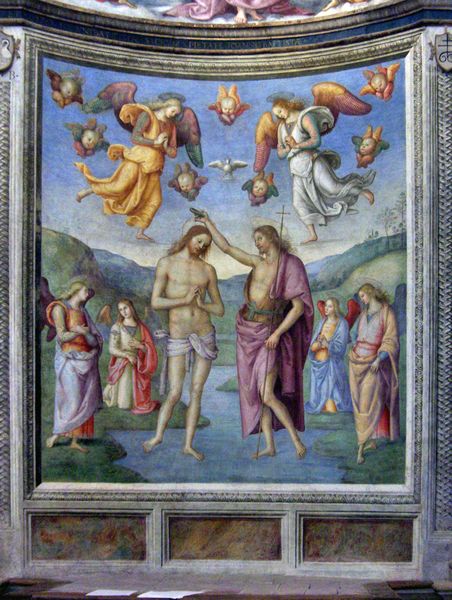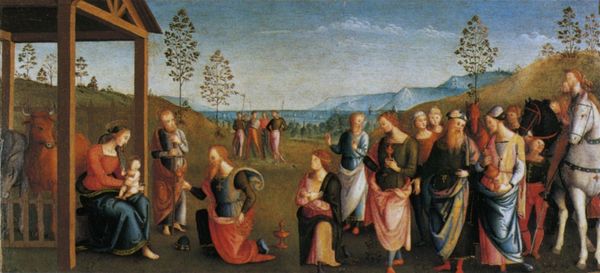
painting, oil-paint, fresco
#
portrait
#
narrative-art
#
painting
#
oil-paint
#
landscape
#
fresco
#
oil painting
#
history-painting
#
italian-renaissance
#
historical building
Copyright: Public domain
Editor: Here we have Antoniazzo Romano's "Stories of the Holy Cross," painted around 1492. It seems to depict a scene from the Bible, perhaps the lead-up to the Crucifixion. What strikes me is how public and performative the grief appears. What do you see in this piece, in terms of its social or historical significance? Curator: I see a powerful convergence of political, religious, and social narratives, very characteristic of the Italian Renaissance and its patron system. Think about the power dynamics inherent in depicting religious stories for public consumption. Who commissioned this work, and what message were they hoping to convey about authority, faith, and perhaps even their own position within the socio-political hierarchy? How do the gendered depictions contribute? Notice the female figures clustered around what seems like Mary; what roles are women afforded here? Editor: That’s interesting! I hadn't considered the patron's intentions so much. Are you suggesting it was about more than just religious devotion? Curator: Religious devotion was certainly present, but it wasn't apolitical. Consider the concept of intersectionality – how power, gender, and religion converge to shape identity and influence social narratives. Who had access to interpret the Bible? To own land? To wield actual power? And how did this change or solidify because of visual and art patronage strategies? What is the background landscape, and how does it give a sense of authority? Does it feel stage-managed to you? Editor: I see your point. It feels less about personal spirituality and more like a declaration of power and public piety. The women indeed seem to embody different aspects of devotion and submission, confined to a specific narrative role, with the more 'active' participation granted to the males portrayed in this fresco. Curator: Exactly. The image actively shapes and reinforces those societal roles. Analyzing the piece from a contemporary theoretical perspective encourages critical questioning of those power dynamics and gendered portrayals. I also invite a deep look into what’s missing and actively silenced. What do the workers look like? How is labor depicted and valued, and can you infer something about class structure through these artistic choices? Editor: This reframing has totally changed my perception. I now see how it speaks volumes about Renaissance society beyond its apparent religious theme. Curator: That's the power of engaging with art through the lens of history, social context, and contemporary theory. We can unpack hidden narratives and power structures that resonate even today.
Comments
No comments
Be the first to comment and join the conversation on the ultimate creative platform.
